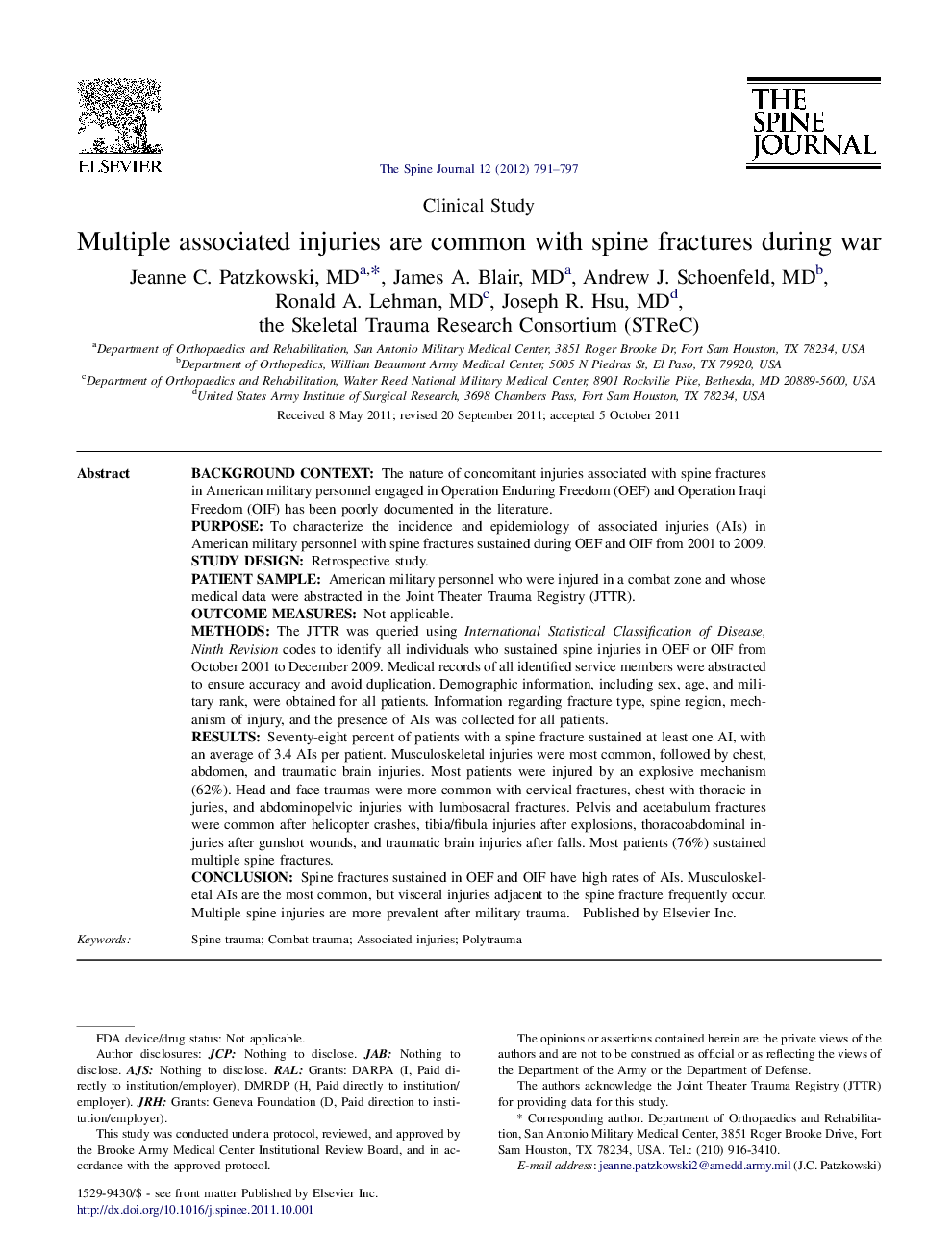| کد مقاله | کد نشریه | سال انتشار | مقاله انگلیسی | نسخه تمام متن |
|---|---|---|---|---|
| 4098049 | 1268606 | 2012 | 7 صفحه PDF | دانلود رایگان |

Background contextThe nature of concomitant injuries associated with spine fractures in American military personnel engaged in Operation Enduring Freedom (OEF) and Operation Iraqi Freedom (OIF) has been poorly documented in the literature.PurposeTo characterize the incidence and epidemiology of associated injuries (AIs) in American military personnel with spine fractures sustained during OEF and OIF from 2001 to 2009.Study designRetrospective study.Patient sampleAmerican military personnel who were injured in a combat zone and whose medical data were abstracted in the Joint Theater Trauma Registry (JTTR).Outcome measuresNot applicable.MethodsThe JTTR was queried using International Statistical Classification of Disease, Ninth Revision codes to identify all individuals who sustained spine injuries in OEF or OIF from October 2001 to December 2009. Medical records of all identified service members were abstracted to ensure accuracy and avoid duplication. Demographic information, including sex, age, and military rank, were obtained for all patients. Information regarding fracture type, spine region, mechanism of injury, and the presence of AIs was collected for all patients.ResultsSeventy-eight percent of patients with a spine fracture sustained at least one AI, with an average of 3.4 AIs per patient. Musculoskeletal injuries were most common, followed by chest, abdomen, and traumatic brain injuries. Most patients were injured by an explosive mechanism (62%). Head and face traumas were more common with cervical fractures, chest with thoracic injuries, and abdominopelvic injuries with lumbosacral fractures. Pelvis and acetabulum fractures were common after helicopter crashes, tibia/fibula injuries after explosions, thoracoabdominal injuries after gunshot wounds, and traumatic brain injuries after falls. Most patients (76%) sustained multiple spine fractures.ConclusionSpine fractures sustained in OEF and OIF have high rates of AIs. Musculoskeletal AIs are the most common, but visceral injuries adjacent to the spine fracture frequently occur. Multiple spine injuries are more prevalent after military trauma.
Journal: The Spine Journal - Volume 12, Issue 9, September 2012, Pages 791–797